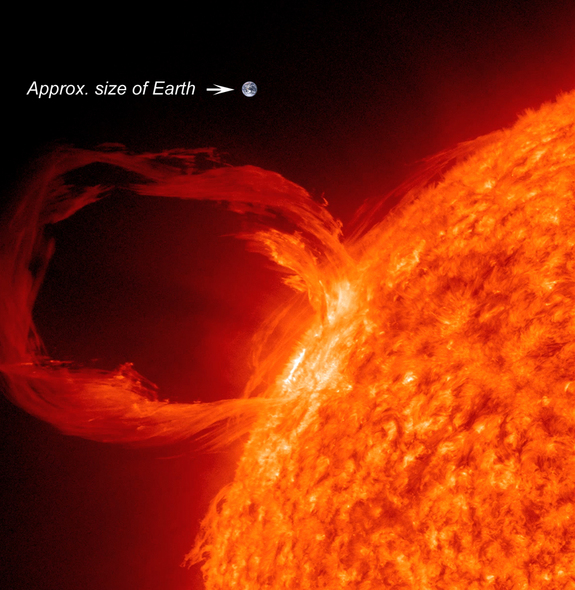
© NASA/SDOOne of the first images taken by SDO and still a favorite: A solar eruptive prominence as seen in extreme UV light on March 30, 2010. The superimposed image of the Earth gives a sense of just how large these eruptions can be.
Magnetic storms set off by the sun could pose a bigger threat than thought to weather, communication, military and other satellites close to Earth, with a potentially devastating economic impact, scientists suggest.
In the new study, researchers found that solar radiation can energize a belt of high-energy particles that surrounds Earth more dramatically than previously believed.
The study focused on the possible effects of a particularly strong magnetic storm on the
Van Allen radiation belts, the dangerous rings of high-energy particles that girdle the Earth. The belts are split into two distinct zones. The outer belt, which is made up of electrons, reaches from about 15,800 to 31,600 miles (25,500 to 51,000 kilometers) above the surface, while the inner belt, which consists of a mix of electrons and protons, reaches from about 4,000 to 8,000 miles (6,400 to 12,800 km) above.
Scientists had known the outer belt could become far more intense during
geomagnetic storms caused by high-energy particles spewed by the sun, such as the storm that supercharged Earth's northern lights display Monday night (Sept. 26). However, they have long thought such storms do not affect the inner belt.


Comment: Argentinian investigators name meteorite victim, rule out gas leak behind Buenos Aires explosion
Witness who photographed Buenos Aires meteor arrested for 'giving false testimony', police force him to change his story
That ain't no satellite! Meteorite impacts Buenos Aires, Argentina